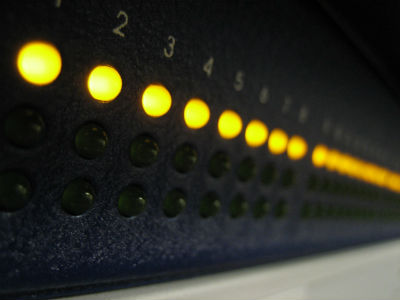
Tips For A Smooth Colocation Deployment
The following excerpt is from Datacate’s Colocation Survival Guide – get the full Guide here.
So you’ve got a handle on all the requirements for your colocation project, you’ve found the best provider for your needs. Next up: get everything in order and ready to install, then perform your deployment. Don’t discount the importance of preparation – be ready ahead of time and things will go smoothly. Below are a few planning points that you’ll want to take into consideration.
Hardware Testing And Burn-In
Whether your equipment is brand new, second-hand or refurbished, treat it as untested and unproven. Perform a burn-in cycle or no less than 24 hours – even if the vendor you purchased it from claims that the tests have already been successfully completed. Burn-in testing is much more than simply booting up your equipment and letting it idle; various burn-in testing programs which are readily available to you will stress-test all aspects of server functionality and report on any problems, giving you the opportunity to correct issues before you put your equipment into production. Searching the Internet for “server burn-in tests” and “server burn-in software” will yield some starting points. While you are at it, install the OS and software, and do as much network configuration and testing as you can, prior to deploying in the data center. It will likely be much more comfortable to do this in your office or work area, rather than standing in the cramped aisle between data cabinets, with the clock ticking.
Cables, Cords and Mounting Hardware
There are few things more annoying than realizing, while in the midst of an equipment installation, that you are missing one much-needed cable. If you are lucky, the data center may have a spare that they can give (or sell) to you, but failing that you may face the daunting prospect of trying to source a needed item in the middle of the night. Don’t let that happen to you: go to the facility armed with all the cables – of all types – that you will need to complete your installation. If necessary, use a table or diagram to itemize each connection, with the type of cable, length, and terminating connectors indicated. Inquire with your provider as to whether or not they will provide the cable for your uplink connection – if you are expected to provide it, you’ll need to get the length and type requirement from them and add that to your list. Finally, ensure that you have the correct type of power cord to successfully connect your equipment to the PDU or power strip.
We discussed standard methods for mounting equipment in the previous section. You must provide all the necessary mounting hardware for your equipment, and it’s highly recommended that you check the fit of hardware prior to performing your installation. It’s not unheard of for an equipment vendor to send the wrong rail kit with a server, especially when buying refurbished or second-hand equipment. Worse yet, rail kits typically have several parts, and different components of different kits can become mixed up. Sort all of this out ahead of time, so you can obtain missing or replacement parts if needed. In addition to rail kits, brackets, and shelves (if applicable to your installation), know what type of vertical mounting posts we will in your target cabinet or rack, so you can determine if you need to obtain any additional hardware.
Equipment Labeling
With all the other details to consider, it’s easy to forget that you really need to give each device a name or ID, and clearly label it on the front face (also labeling the back is a good idea). This simple step will expedite any remote hands requests that you make, allowing facility staff to quickly identify a device that you reference by its name. You can keep notes for each device, including such things as where it is mounted in the cabinet or rack, what IP address(es) it uses, interconnections between devices, etc – all of this information is important, but it is of little use if you (and others) can’t tell one device from another!
Equipment Unloading Procedure
Some facilities may let you bring your equipment in the front door; others may have a loading dock and/or a specific procedure for unloading and transporting equipment. Before you lug your stack into the lobby, ask if there’s a loading dock of some other place for equipment unloading. Rolling carts of some type should be made available to you upon request.
Tools Of The Trade
While many facilities will loan you basic hand-tools while on-site, it’s best not to count on these being available. A small toolkit can be a life-saver in the data center. Things you’ll definitely want in your kit would include a slotted and a Philips screwdriver (battery-powered units are great, but old-fashioned manual screwdrivers may needed for tight spots), an adjustable wrench or pliers, wire cutters (for trimming or removing cable ties), and a small flashlight. Wish-list items would include a network cable tester, label printer, a supply of rack nuts with matching bolts, and cable ties
